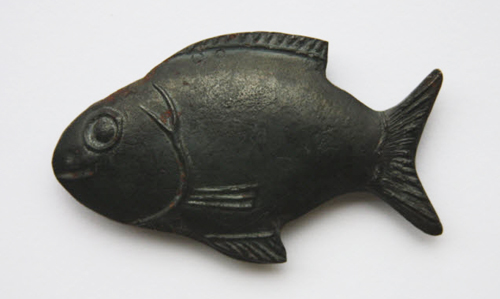
Christopher Charles was about to begin his U of G graduate degree when he went looking for knowledge and purpose on the other side of the world. He ended up finding a way to help poor Cambodian villagers combat life-threatening anemia with little more than a pot of boiling water and a smiling iron fish.
In spring 2008, shortly after finishing his undergraduate degree in biomedical science, Charles received a grant from the Canadian International Development Agency to work for a few months overseas. He’d volunteered before in Central America and Southern Africa. Now, with the summer off before he was to begin his master’s degree, he figured he’d take a little trip.
“For me, it was an opportunity to get my feet wet doing some global health research before coming back to Guelph and slogging away at my lab work,” Charles says. He chose Cambodia, where he knew that helpers were needed for a project on dietary iron deficiency.
Travelling often by boat, they collected blood samples from people living in villages in Kandal Province. The volunteers spent weekdays in the village of Preak Russei, sleeping in bamboo huts on stilts, without electricity, indoor plumbing or running water. “It was in a very rural area, working with the poorest of the poor,” Charles says.
He headed off, not knowing that he was starting a journey that would change his life and those of others.
Charles joined Research Development International, an NGO whose researchers study dietary iron deficiency. That problem affects about 3.5 billion people worldwide, especially in developing countries.
Lack of iron also causes iron-deficiency anemia (IDA), which affects about two billion people and is a severe public health problem in Cambodia. In that country, one in three women between ages 15 and 49 has IDA; anemia affects 60 per cent of pregnant women and children under five.
IDA causes weakness, fatigue and even death, especially from bleeding during childbirth. It has been linked to low birth weight, learning problems and reduced immunity.
Dietary supplements have not worked in Cambodia. “People were just not taking the pills,” says Charles. “One of the reasons was cost. If it means giving up food for the family to take a pill, they won’t do it.”
It was hard for him to fathom something preventable being so rampant. “So I went from looking at this widespread problem to wanting to figure out what to do about it.”
One thing was clear: he couldn’t help all the way from a laboratory in Guelph. With his three-month stint nearly over, Charles phoned his graduate adviser, U of G president Alastair Summerlee. “I told him that I couldn’t start my master’s degree. I said I needed more time, that things had changed and that I wanted to see this project through to the end.”
Summerlee told Charles to forget about working in a lab. He said: “I think you’ve found your master’s thesis.”
That was three years ago. “The master’s project spiralled into a PhD project,” Charles says with a smile. He is now co-advised by population medicine professor Cate Dewey.
Once he knew he was staying in Cambodia, Charles began focusing on preventing IDA. “We knew that whatever we came up with had to be low-cost, effective and, above all else, something that people would use,” he says. “We knew that our big challenge would be marketing whatever we came up with to the community.”
In other developing countries, cooking with iron pots had proven helpful, as the element leaches into food. But Charles knew they’d have little luck persuading Cambodians to switch to heavier, more expensive cookware.
Villagers boiled their drinking water every day. Why not add something made of iron to release the element in boiling water?
They tried a simple iron disc, but the villagers were reluctant to use it. Next the researchers tried shaping the disc into a lotus flower. No luck. Eventually they came up with a smiling fish design. “It’s a native fish species considered lucky in village folklore,” says Charles. People liked it, and the iron fish project was born.
The fish is thrown into the pot with the day’s drinking water, along with a squeeze of lemon juice (vitamin C helps iron absorption in the gut). Made from scrap iron from a nearby factory, the fish cost $1.50 each to make.
Lab studies have shown that the drinking water provides about 75 per cent of daily iron requirements. More important, it increases the body’s iron stores, so more circulates in the blood. In continuing field studies, people report feeling better and having more energy.
Charles has spent most of the past three years in Cambodia, returning to Guelph just intermittently. Villagers are still using the fish they received in 2008. Referring to the iron items, he says, “The smiles have faded a bit, but they still seem to be working.”

Articles about his research have appeared in scientific journals, and he is now overseeing a larger Cambodian study on nutrition.
Charles hopes to work for an NGO and, eventually, for a university. “But I’d like to get more practical experience in global health before teaching it.”
No matter where he ends up, his time in Cambodia will likely remain his most formative experience. There are so many stories to tell. “I was the only white person in the village, the only one who spoke English. I’d be sitting eating breakfast, and people would come up to me and touch my nose, the hair on my arms and legs, the things that made me different. We learned each other’s languages, we learned a lot from one another.”
Summerlee, who has advised Charles since the project’s inception, call his stories “remarkable and touching. But perhaps most important is that this invention could improve the lives of millions of women in the Far East.”